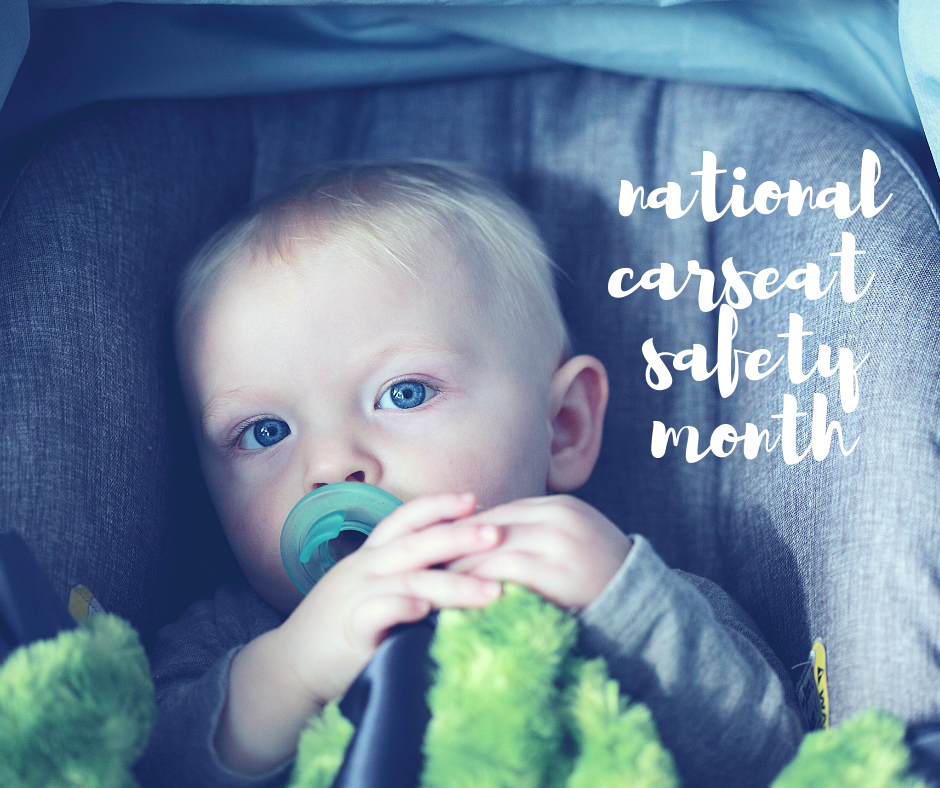Precious Cargo | National Car Seat Awareness Month

September is National Car Seat Awareness Month. Whether you are an expectant parent or you are a veteran parent, this is a great time for all of us to brush up on our car seat knowledge. Can car seats often be heavy, bulky and take up lots of room? Well, yes. Can they also be complicated to install and a pain to transfer from car to car? Heck, yes. But I can promise you that they save lives every single day and that our precious cargo is absolutely worth it.
I am not a professional, but I am passionate about keeping children as safe as possible. In fact, many friends and family members call me a “car seat nazi”. My older kids (and my husband!) often roll their eyes. My almost-nine-year-old is likely the only one of his friends still in a five point harness. It is a huge pet peeve of mine to see a vehicle in transit with young children bouncing around unrestrained. It is our job as parents and caregivers to educate ourselves and to see that our children are well protected.
Shopping for the perfect car seat can be overwhelming. Are all car seats the same? It’s important to know what to look for. Do your research and check out consumer reports, which are based on balancing crash protection and ease of use. For a detailed list of specific seats check out this product information guide.
It is crucial to note that most seats expire six years after the date of manufacture (not the date of purchase). This information can be found stamped on the base of the seat. It is vital that car seats are disposed of properly after this point because of material wear and ongoing technology changes. It’s best to cut the straps so that it cannot be used again.
It is very important to note that all car seats must be installed and used per the instructions provided by the manufacturer. This includes placement as well as recommended height, weight and age criteria specified. LATCH stands for Lower Anchors and Tether for Children and act as a way to secure a car seat to a vehicle using straps from the seat that connect to special metal anchors. The LATCH system and the seatbelt are equally as safe when used correctly but cannot be used together.
Auto accidents are one of the leading causes of death and serious injury for children. The Centers for Disease Control and Prevention report that improper car seat installation greatly contributes to this. They estimate that proper use of seats reduces the risk of death by 71% for infants and 54% for toddlers. Furthermore, proper use of booster seats protects 45% of children ages 4-8, opposed to using the seat belt alone. Please know that any local fire department, hospital or Child Passenger Safety Technician (CPST) would be happy to check the installation of your car seat(s).
It’s easiest to think of the car seat progression in four stages. First, Texas state law requires children to remain rear facing until the age of two and 35+ pounds in an infant seat or a convertible seat. I know how tempting it can be to turn that sweet face around as soon as possible, but I would encourage you to leave them rear facing as long as possible. Their necks and spines are still developing and the impact from a collision is much less straining on their bodies if they are rear facing. Did you know that little ones are five times safer rear facing? FIVE TIMES!!
The second stage is forward facing. Once a child outgrows their rear facing seat and meets the manufacturer’s height/weight standards (approx. 40-80 pounds) they can face forward in a five point harness.
The third stage can be a little tricky! This is the booster seat upgrade. After the minimum age of 4 and 40+ pounds and behavior maturity, children may ride in a booster seat as long as they are able to sit still with both the shoulder and lap belt properly positioned. The belt must remain on the chest/shoulder (not behind the back) and the lap belt must remain over the hips (not over the stomach). Fortunately, there are also options for five point harnesses that accommodate children over 90+ pounds!
For the fourth and final stage, children must be a minimum of 4’9″ tall to ride without a booster seat. The American Academy of Pediatrics encourages children under the age of 13 to remain in the back seat at all times with a seat belt.
There are some common mistakes parents make that it is wise to be familiar with. First, when holding the bottom of the car seat, you should not be able to move it back and forth more than an inch. Next, be sure that the chest clip rests at the child’s armpit level. Check to see that the straps aren’t too loose. They should be snug and no more than a finger should be able to fit between a child’s collarbone and the harness strap. Always remove your child’s puffy jacket before securing the straps. Last but not least, proper use of the tether is imperative. Read the user manual and attach it accordingly. Failure to use it contributes to the greater chance of a child’s head snapping forward during an accident.
I urge you, please don’t cut corners. Don’t rush out of the safest option too soon. Don’t let your kids convince you otherwise. And for goodness sake, be an example and wear your own seat belt! Commit to keeping your family safe…every single time.
Additional resources:
- Safekids.org
- dps.texas.gov













